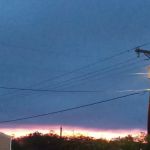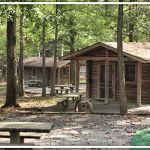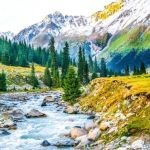- what-to-watch-and-when-2025
- where-to-go-by-region
- moonlight-matters-and-planning
- field-notes-stories-from-the-road
- pro-tips-for-a-better-skywatch
- make-it-happen-with-refined-travel
1. What to Watch and When in 2025
If you’re building an itinerary around The Top Meteor Showers and Where to See Them in the US in 2025, anchor your calendar to a few reliable all-stars. The Perseids peak the night of August 12 (active mid-July to late August), typically bringing 50–75 meteors per hour under dark skies. Expect bright, fast streaks—the kind that make a whole campsite gasp at once. :contentReference[oaicite:0]{index=0}
Fall delivers the Orionids around October 22–23, with an especially favorable moon phase this year (near-new), making their swift Halley’s-Comet dust a crisp, predawn show. :contentReference[oaicite:1]{index=1}
For an end-of-year finale, the Geminids blaze on December 13–14 and often outshine every other shower—slow, bright, and frequent, with little moon interference forecast for 2025. :contentReference[oaicite:2]{index=2}
Don’t sleep on the midsummer “double feature”: Southern Delta Aquariids and Alpha Capricornids peaking together around July 29–30—great warm-up nights before the Perseids crescendo. :contentReference[oaicite:3]{index=3}
For a full year view—including minors and variables—use the American Meteor Society’s calendar as your master reference while you fine-tune dates for The Top Meteor Showers and Where to See Them in the US in 2025. :contentReference[oaicite:4]{index=4}
2. Where to Go by Region
West & Southwest: Wide horizons and famously dry air make this region a dream. Consider Great Basin National Park (NV), Death Valley (CA), and Zion (UT)—all repeatedly ranked for pristine night skies. Campsites fill quickly on peak weekends, but even roadside turnouts can offer jaw-dropping views if you scout ahead by day. :contentReference[oaicite:5]{index=5}
Mountain West & High Desert: Central Idaho Dark Sky Reserve and Utah’s constellation of Dark Sky Parks create a choose-your-own-adventure map of secluded overlooks. If you’re chasing the Geminids, snow-dry cold can mean crystal clarity—pack layers and a thermos. :contentReference[oaicite:6]{index=6}
California to the Pacific Northwest: Joshua Tree’s granite gardens and high desert calm amplify the Perseids; farther north, pick rain-shadow zones east of the Cascades for better odds of clear nights.
Plains & Midwest: The big secret here is distance—from light domes, that is. State parks an hour or two from metro areas often deliver surprisingly dark Bortle readings.
East & Appalachians: While light pollution is tougher, certified sites and remote ridgelines still reward patient watchers. Use the International Dark Sky Places directory to pinpoint officially recognized parks and communities across the country. :contentReference[oaicite:7]{index=7}
3. Moonlight Matters & Planning Around It
Meteor watching lives and dies by the Moon. A bright gibbous will wash out faint streaks; a sliver or new Moon turns the sky into velvet. Cross-check shower peaks with a 2025 lunar phase guide while planning your route. NASA’s phase visualizations make it simple to spot dark-sky windows for each month. :contentReference[oaicite:8]{index=8}
Pro move: If the exact peak night is moon-bright or cloudy, plan a two-to-three-night range on either side. Many showers offer strong activity for at least 24–48 hours, so your chances climb with flexibility. :contentReference[oaicite:9]{index=9}
4. Field Notes: Stories from the Road
“The parking-lot Perseids, Utah.” We rolled into a small pull-out outside Moab after a late detour, too tired for a full camp setup. Twenty minutes after lights-out, the sky opened: long, silent streaks every minute, then a head-turner that seemed to split the Milky Way. The next morning, the coffee was mediocre; the memory wasn’t.
“Orionids on a school night, West Texas.” A family set alarms for 3:30 a.m., drove 30 minutes from town, and laid out sleeping bags on their truck bed. The kids counted out loud—“five, six, SEVEN!”—as quick darts skimmed Orion’s shoulder. With the Moon nearly absent this year, the same plan could be even better for many US viewers. :contentReference[oaicite:10]{index=10}
“Geminids in boots, Nevada high country.” It was 12°F, but the sky was the kind of black that makes your breath sound loud. Slow, bright fireflies of rock flicked across Gemini every few beats. We left only to beat the snow—hands thawing on the dashboard vents, grinning like kids. :contentReference[oaicite:11]{index=11}
5. Pro Tips for a Better Skywatch
1) Choose direction over radiant: For Perseids and Geminids, look 40–60° away from the radiant toward the darkest part of your sky. Your peripheral vision catches the long trails better. :contentReference[oaicite:12]{index=12}
2) Arrive early, stay late: Let eyes adapt 20–30 minutes, keep phones dimmed, and track hourly forecasts with wind maps—clear, dry air beats any gear upgrade. :contentReference[oaicite:13]{index=13}
3) Comfort = longer sessions: Reclining chairs, insulated pads, and a hot drink buy you another hour under the show. Winter greats like the Geminids reward the well-layered. :contentReference[oaicite:14]{index=14}
4) Backup nights: Cloud cover happens. Build Plan B sunsets and Plan C late-night drives into your itinerary so you don’t miss the window entirely.
6. Make It Happen with Refined Travel
If The Top Meteor Showers and Where to See Them in the US in 2025 is calling your name, align dates, dark-sky sites, and lodging into one clean plan. For curated routes to prime parks, off-grid stays with truly dark horizons, and timed itineraries around lunar phases, explore 【Refined Travel 】 for expert-built options and on-the-ground insight. From securing scarce campsites to arranging guided night-sky programs, having pros on your side turns “maybe” into a memory.
Ready to feel that hush when the first streak tears across the stars? Chart your dates, pick your sky, and let the night do the rest—then check 【Refined Travel 】 to compare stays and stargazing add-ons tailored to your style.







 Lakewood Camping Resort4.0 (3149 reviews)
Lakewood Camping Resort4.0 (3149 reviews) Horizon Land Management1.0 (52 reviews)
Horizon Land Management1.0 (52 reviews) Pine haven Mobile Home Park3.0 (15 reviews)
Pine haven Mobile Home Park3.0 (15 reviews) Poncho's Pond RV Park4.0 (494 reviews)
Poncho's Pond RV Park4.0 (494 reviews) Piney Campground4.0 (835 reviews)
Piney Campground4.0 (835 reviews) Springhill Park Campground4.0 (518 reviews)
Springhill Park Campground4.0 (518 reviews) Exclusive Travel Packages for First-Class Travelers: A Guide to Luxury Vacations
Exclusive Travel Packages for First-Class Travelers: A Guide to Luxury Vacations Refined Travel Experiences in Southeast Asia: Explore Luxury & Unique Destinations
Refined Travel Experiences in Southeast Asia: Explore Luxury & Unique Destinations How to Make the Most of Luxury Vacation Deals: Expert Tips for Savvy Travelers
How to Make the Most of Luxury Vacation Deals: Expert Tips for Savvy Travelers How to Enjoy a Refined Travel Experience in the Mountains
How to Enjoy a Refined Travel Experience in the Mountains Refined Travel Itineraries for Art and Culture Lovers: Explore the World of Art and History
Refined Travel Itineraries for Art and Culture Lovers: Explore the World of Art and History Most Luxurious Destinations for Honeymooners: Top Spots for Romance and Luxury
Most Luxurious Destinations for Honeymooners: Top Spots for Romance and Luxury